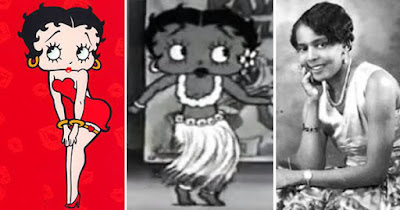The Real Betty Boop Was a Black Woman... Before She Was Whitewashed!
PBS has confirmed that Betty Boop, the popular cartoon character introduced to the world by cartoonist Max Fleischer in 1930, was actually inspired by a real-life African American jazz singer and entertainer from Harlem named Esther Jones. Her stage name was "Baby Esther", but unfortunately, when her character become the first and most famous sex symbol in animation she was whitewashed with most people having no idea where the original inspiration came from.
Baby Esther had a popular cabaret act at the infamous Cotton Club in Harlem, New York where she sang with a unique vocal style that featured “boop-boop-a-doops” and other similar scat sounds. That very same style was heavily imitated by the Betty Boop animated character.
Initially, Betty Boop was shown in cartoons as an African American woman. She appeared in at least one animated scene in the popular Popeye The Sailor Man series. But soon after, she was transformed into a white woman and remained so until her character was finally retired. It's estimated that the Betty Boop franchise generated millions of dollars in revenue from televison networks and sales of merchandise.
Meanwhile, the very woman who inspired the character, Baby Esther, was never compensated in any way. In fact, she never even really achieved mainstream success. During her entire career, she was mostly only known locally in the New York City area, and she reportedly died at a very young age.
She is, however, mentioned in many documentaries and books about the Harlem Renaissance, and her legendary way of singing does live on in the iconic Betty Boop character.
Trending

The First Americans Were Black Indians of African Descent
November 20, 2019

Martin Luther King, Jr. Was Arrested 29 Times For These So-Called Crimes
November 03, 2019

The First Inhabitants of China Were Black
June 11, 2020

Meet the Black Inventor Who Created the First Digital Cell Phone
November 06, 2019
Most Popular Posts:
You May Also Like:

Martin Luther King, Jr. Was Arrested 29 Times For These So-Called Crimes
November 03, 2019

The First Americans Were Black Indians of African Descent
November 20, 2019
Also Check Out:

The First Americans Were Black Indians of African Descent
November 20, 2019

Martin Luther King, Jr. Was Arrested 29 Times For These So-Called Crimes
November 03, 2019









